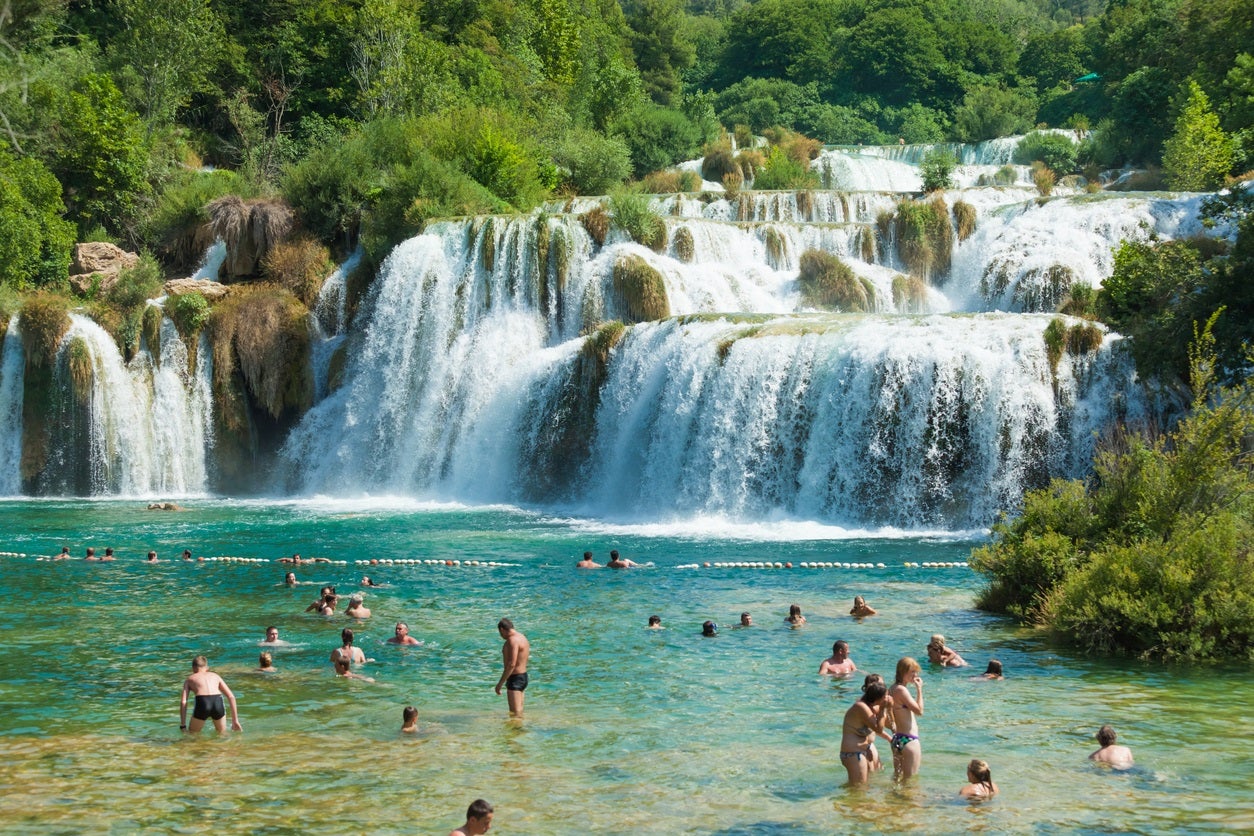Skradinski buk: Croatian officials limit visitor numbers to its most famous waterfall
Crackdown announced as site gets overloaded

Your support helps us to tell the story
From reproductive rights to climate change to Big Tech, The Independent is on the ground when the story is developing. Whether it's investigating the financials of Elon Musk's pro-Trump PAC or producing our latest documentary, 'The A Word', which shines a light on the American women fighting for reproductive rights, we know how important it is to parse out the facts from the messaging.
At such a critical moment in US history, we need reporters on the ground. Your donation allows us to keep sending journalists to speak to both sides of the story.
The Independent is trusted by Americans across the entire political spectrum. And unlike many other quality news outlets, we choose not to lock Americans out of our reporting and analysis with paywalls. We believe quality journalism should be available to everyone, paid for by those who can afford it.
Your support makes all the difference.Officials have announced that access to one of Croatia’s most beautiful – and Instagrammable – destinations will be tightly controlled from this summer.
From now on, visitors to the Skradinski buk waterfall in Dalmatia's Krka National Park will be limited to 10,000 at a time due to concerns over safety and damage to the landscape. The new rule has been enacted just before peak tourist season.
Skradinski buk, which covers about 2,625 feet, has a large pool for swimming surrounded by three waterfalls. It has become a huge draw for tourists, especially during the warmer months.
When the waterfalls are at capacity visitors will asked to wait and directed to other areas of the park to explore.
The changes were announced last week by the director of Krka National Park, Krešimir Šakić, who explained the move was vital to protect the falls. “While visitors wait to visit Skradinski buk, they will able to visit instructive hiking trails and viewpoints and will able to enjoy the sacred heritage of Krka,” Šakić said.
Krka has had national park status since 1985 and Croatian authorities are tasked with protecting the 109 square kilometre area, which the Krka river flows through. As well as Skradinski buk, the park is home to six other waterfalls, caves and lush forests.
Croatian park officials seem to have heeded lessons from last year's disastrous season. Visitors to Plitvice National Park last summer caused huge damage when they veered off designated pathways at the UNESCO World Heritage site, apparently to capture better photos. As a result, Plitvice – Croatia’s oldest national park – is now at risk of losing its UNESCO status.
Around 3.5 million people visited Croatia’s national parks in 2016.
Join our commenting forum
Join thought-provoking conversations, follow other Independent readers and see their replies
Comments